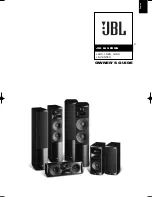
14
E
n
g
li
sh
2.3.6 Window COMPRESSOR
Button BACK to return to the previous
view
Level indicator VU and gain reduction
GR
Rotary knob “Threshold” with input/indi-
cation field for the threshold value
Rotary knob “Attack” with input/indica-
tion field for the attack time
Rotary knob “Hold” with input/indication
field for the hold time
Rotary knob “Release” with input/indica-
tion field for the release time
Rotary knob “Ratio” with input/indication
field for the compression ratio
Rotary knob “Makeup Gain” with input/
indication field for level loss compensa-
tion
2.3.5 View X-OVER
(fig. 11)
Buttons to go to a different view
Curve diagram of the magnitude fre-
quency response for all high pass filters
and all low pass filters of the outputs
When a crossover network is created,
all outputs are represented in a diagram
so that the frequency crossovers are
easy to identify. (For linked outputs, only
one filter curve is shown.)
The cut-off frequencies of the filters
are represented by triangular markings
above the curve. To change the fre-
quency, move the corresponding mark-
ing with the mouse (as an alternative to
the numeric input in
/
).
High pass filter HPF: input/indication
field for the cut-off frequency (enter val-
ues in Hz; “Off” < 20 Hz)
(same effect as
)
High pass filter HPF: list field to select
the filter type (same effect as
)
Low pass filter LPF: input/indication field
for the cut-off frequency (enter values
in Hz, “Off” > 20 kHz) (same effect as
)
Low pass filter LPF: list field to select the
filter type (same effect as
)
⑪
View X-OVER
Input/Indication field G (gain) for adjust-
ing the volume of the output (same
effect as
and
)
Input/indication field D (delay) for ad-
justing the signal delay of the output
(same effect as
)
Level indicators for the outputs
Switch LINK to link the outputs (in pairs,
same effect as
)
Switch MUTE to mute the correspond-
ing output (same effect as
)
Switch PHASE INVERT for phase inver-
sion of the corresponding output (same
effect as
)
⑫
Compressor configuration window















































